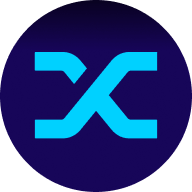Non-fungible tokens (NFT) have become increasingly popular as their list of use cases continues to expand. However, NFT creators and collectors encounter issues such as high marketplace fees, uneven royalties, slow sweeping, and low trading volume.
To help solve these issues, platforms such as Blur (BLUR) have emerged to revolutionize the NFT space. Within a few months of launching, it became a leading NFT marketplace loved by collectors and creators.
What is Blur
Blur is an NFT marketplace and data aggregator built on the Ethereum blockchain. It has several features that make it a more attractive NFT marketplace for creators and collectors, including a faster sweeping rate, zero market fees, and incentives for trading activities. Creators also get a better royalty fee structure, high trading volume, and support for smaller NFT projects.
Although Blur is a relatively new NFT marketplace, it gained much traction in very little time, competing with the likes of OpenSea, the largest NFT marketplace by volume. Some of this success can be attributed to Blur fundraising $14 million from world-class investors and NFT traders.
The Blur team
The exact names of the founding team members are not known. However, their pseudonyms and history in the crypto and blockchain space are known.
Pacman, a skilled Web3 developer, is not only the founder of Blur but also plays a significant role in its development. Heading the Blur Foundation is Zeneca, who holds the position of Director.
Together, Pacman, Zeneca, and the rest of the Blur team have collaborated with prestigious entities such as MIT, Five Rings Capital, Twitch, Square, and Y Combinator, showcasing their expertise and experience in the field.
How does Blur work
Built on the Ethereum blockchain, the trading platform collects NFT data from multiple sources and displays real-time information to users. On the Blur platform, NFT collectors can identify trending NFTs, the latest floor prices, trading volumes for different projects, and other relevant data.
Blur offers a zero trading fee service, meaning both buyers and sellers are not charged trading fees. When Blur first emerged, this was their biggest selling point. OpenSea, Blur’s biggest competitor, was forced to scrap their fees in response. Blur also offers customizable royalty packages, allowing creators to choose their own compensation percentage.
Blur’s lending platform
Taking their efforts a step further, Blur expanded its offerings by developing a lending platform specifically tailored for NFTs. This innovative feature provided NFT holders with increased opportunities to leverage the value of their assets.
By collateralizing their NFTs, users gained the ability to obtain loans in cryptocurrency directly on the platform. This novel approach created new avenues for NFT holders to access liquidity and unlock the potential value of their digital assets..
BLUR tokenomics
BLUR is an ERC-20 token. There are over 464 million BLUR tokens currently in circulation, and the remainder of its total supply of 3 billion will be scheduled for emission. The protocol uses the Proof of Stake (PoS) consensus mechanism for block validation.
BLUR use cases
The BLUR token serves various purposes within its ecosystem. For instance, it operates as a governance token, enabling users to participate in decision-making processes and shape the direction of the Blur ecosystem.
BLUR is also used to reward its users through token airdrops, providing users with incentives and benefits for their engagement and participation in the ecosystem. Finally, BLUR acts as a currency within its NFT marketplace, facilitating transactions and serving as a medium of exchange for buying, selling, and trading digital assets.
BLUR distribution
Blur token is distributed as follows.
- 40 percent allocated towards early users and creators through airdrops
- 20 percent was given to the team and advisors
- 20 percent reserved for future development
- 10 percent for liquidy purposes
- 10 percent for marketing and partnerships
The future expansion plan of Blur
With its impressive trading volume, Blur has emerged as the top NFT marketplace in the industry. It achieved a significant milestone in February by surpassing OpenSea in NFT trading volume, and has since maintained its leading position. The Blur team is determined to sustain this position for an extended duration.
While Blur reigns supreme in trading volume, it is worth noting that OpenSea still boasts a larger number of individual traders. In light of this, Blur has set its sights on expanding its user base in the upcoming months, with the goal of attracting a greater number of users to its platform.




















Socials